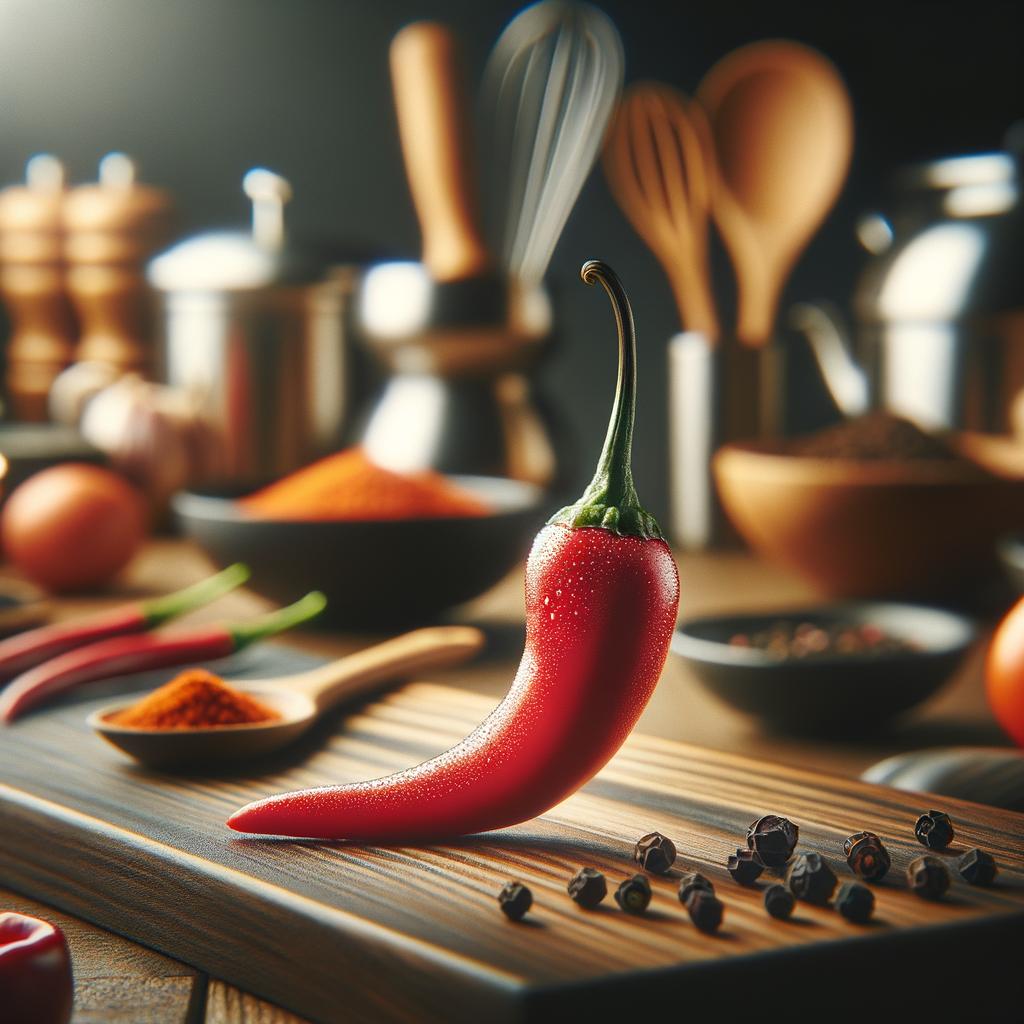Thai Chili

Description Thai chili, also known as Bird's Eye chili, is a small yet fiery ingredient that holds a significant place in many cuisines. It has a vibrant red or green color, with a smooth and glossy outer skin that is deceptively inviting. The chili's texture is crisp and firm, and its flavor profile is an intense combination of heat and a subtle sweetness. What sets Thai chili apart from its counterparts is its exceptional spiciness, despite its small size, and its distinctive aroma that imparts a unique flavor to dishes.
Primary Uses Thai chili is extensively used in Southeast Asian cuisines, particularly Thai and Vietnamese. It's a key component in dishes like Tom Yum Soup, Pad Thai, and various curry pastes. The chili is used whole, chopped, or as a paste, and it can be dried and powdered for a longer shelf life. Beyond culinary uses, Thai chili is also used in traditional medicine for its anti-inflammatory properties and is often associated with rituals and ceremonies in some cultures, symbolizing protection and good luck.
History The history of Thai chili is as vibrant as its color. Originating in Central and South America, these chilies were introduced to Southeast Asia by Portuguese traders in the 15th century. Over time, they became an integral part of the region's cuisine and culture. The chili's fiery heat is often associated with the equally fiery temperament of the Thai people. There's a charming folklore in Thailand that attributes the chili's spiciness to the country's hot climate, saying the chili "grew angry" from the heat, hence its intense spiciness.
Nutritional Information Despite its small size, Thai chili is packed with nutritional value. It is rich in vitamins A and C, and it also contains significant amounts of iron and potassium. The capsaicin in the chili, responsible for its heat, has been linked to a variety of health benefits, including pain relief, heart health, and weight loss. However, its high heat level may pose a risk to those with a sensitive palate or digestive issues. Compared to other chilies like jalapenos or bell peppers, Thai chili offers a more intense heat and a higher concentration of capsaicin, making it a spicy powerhouse in a tiny package.

